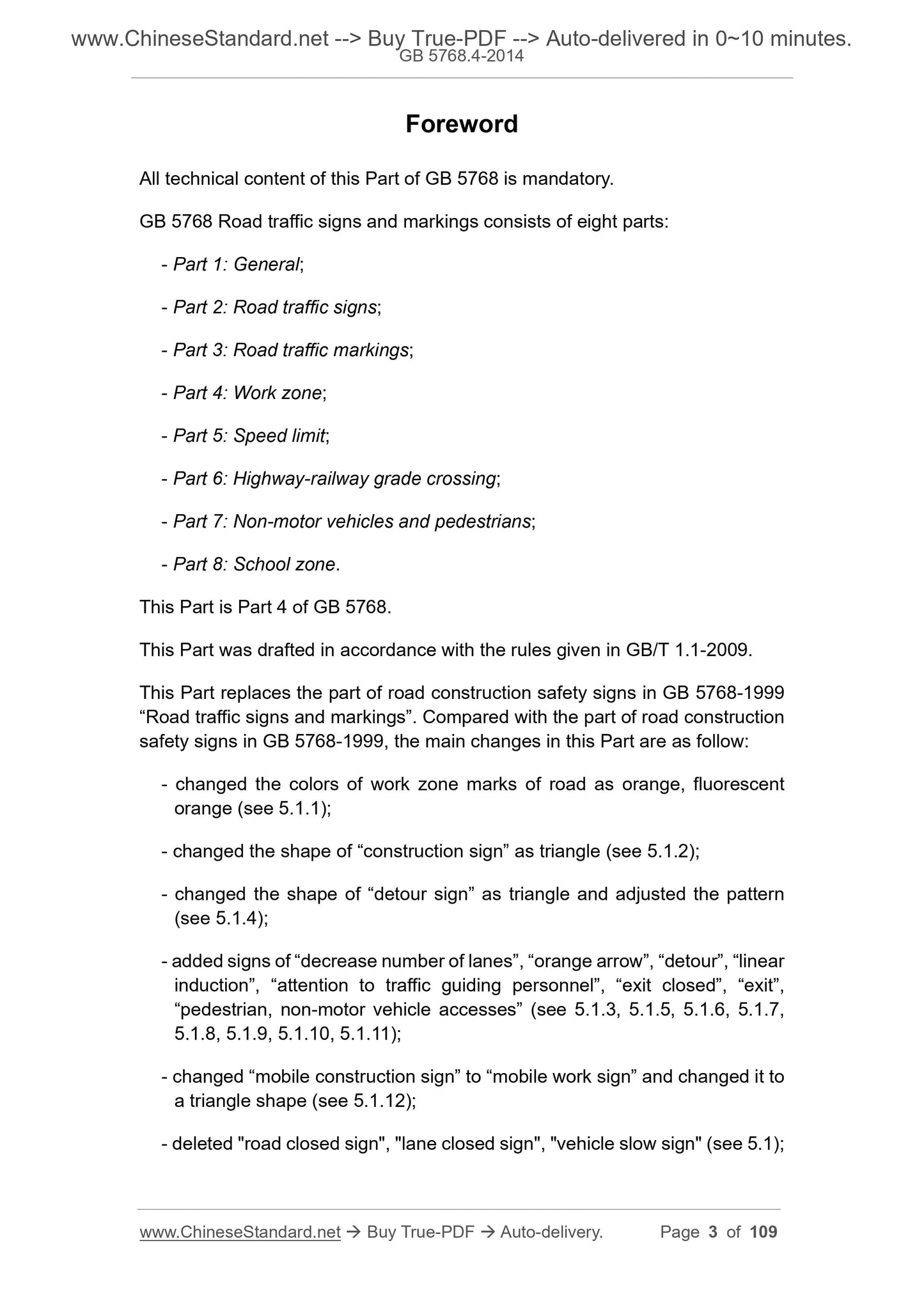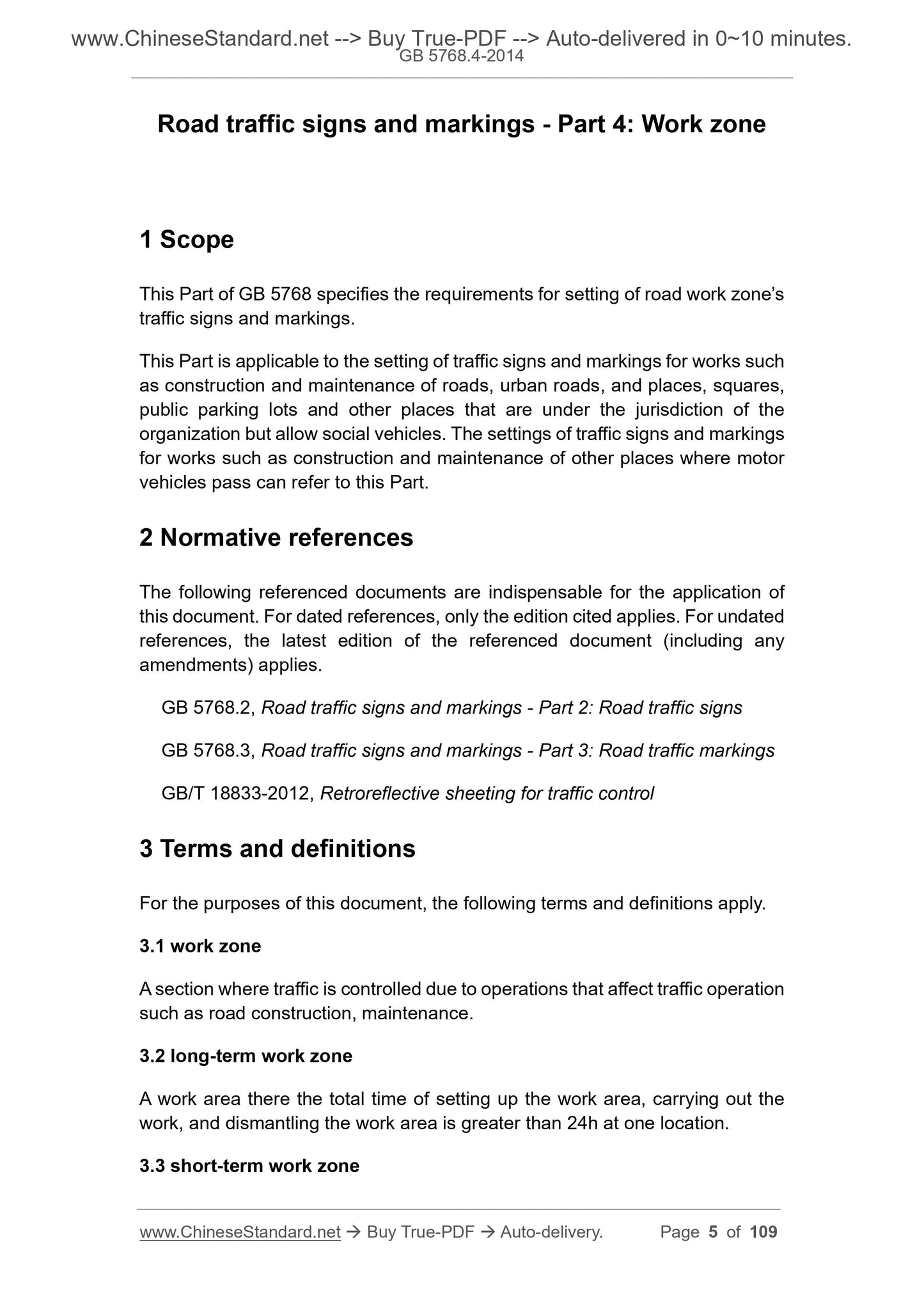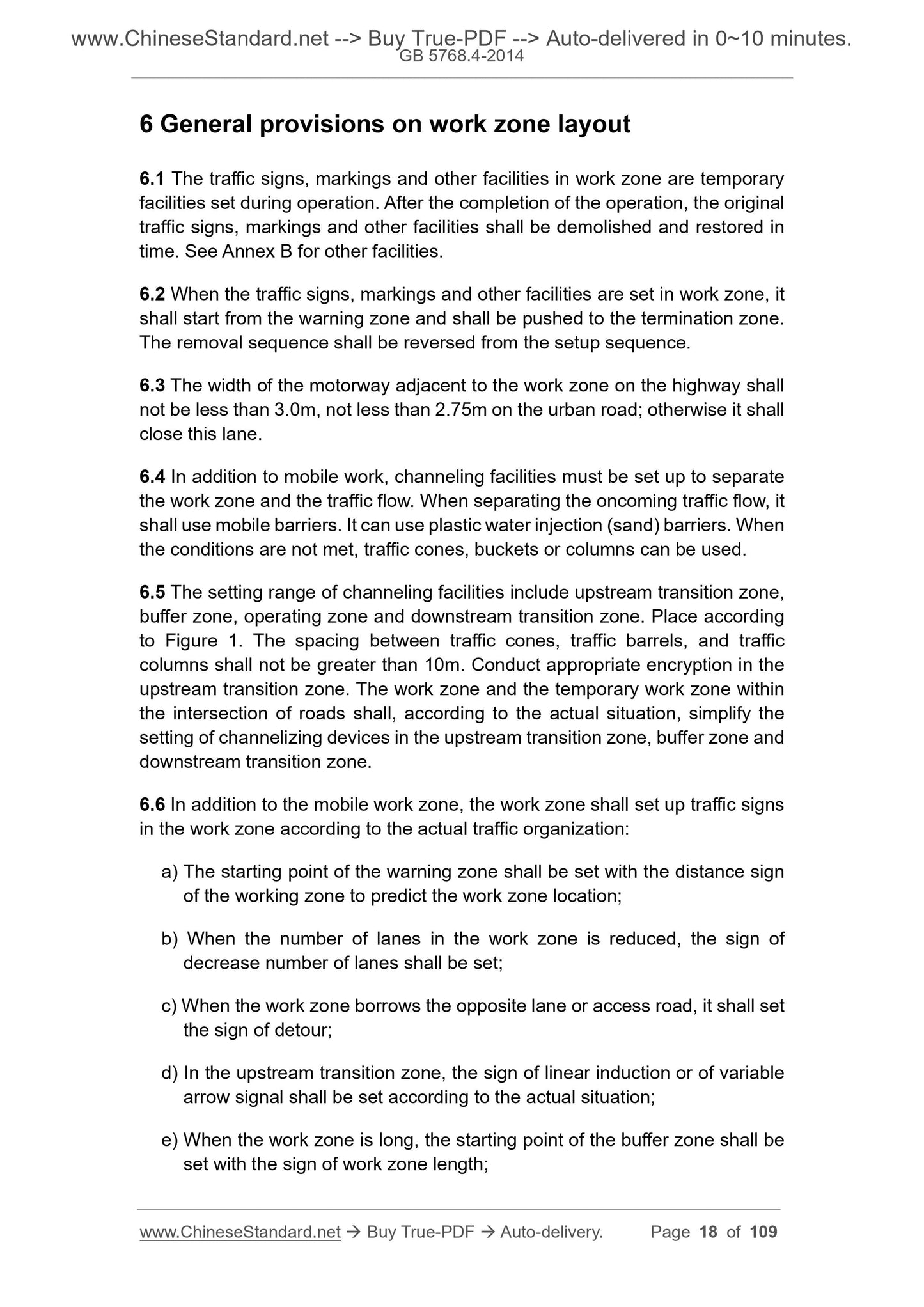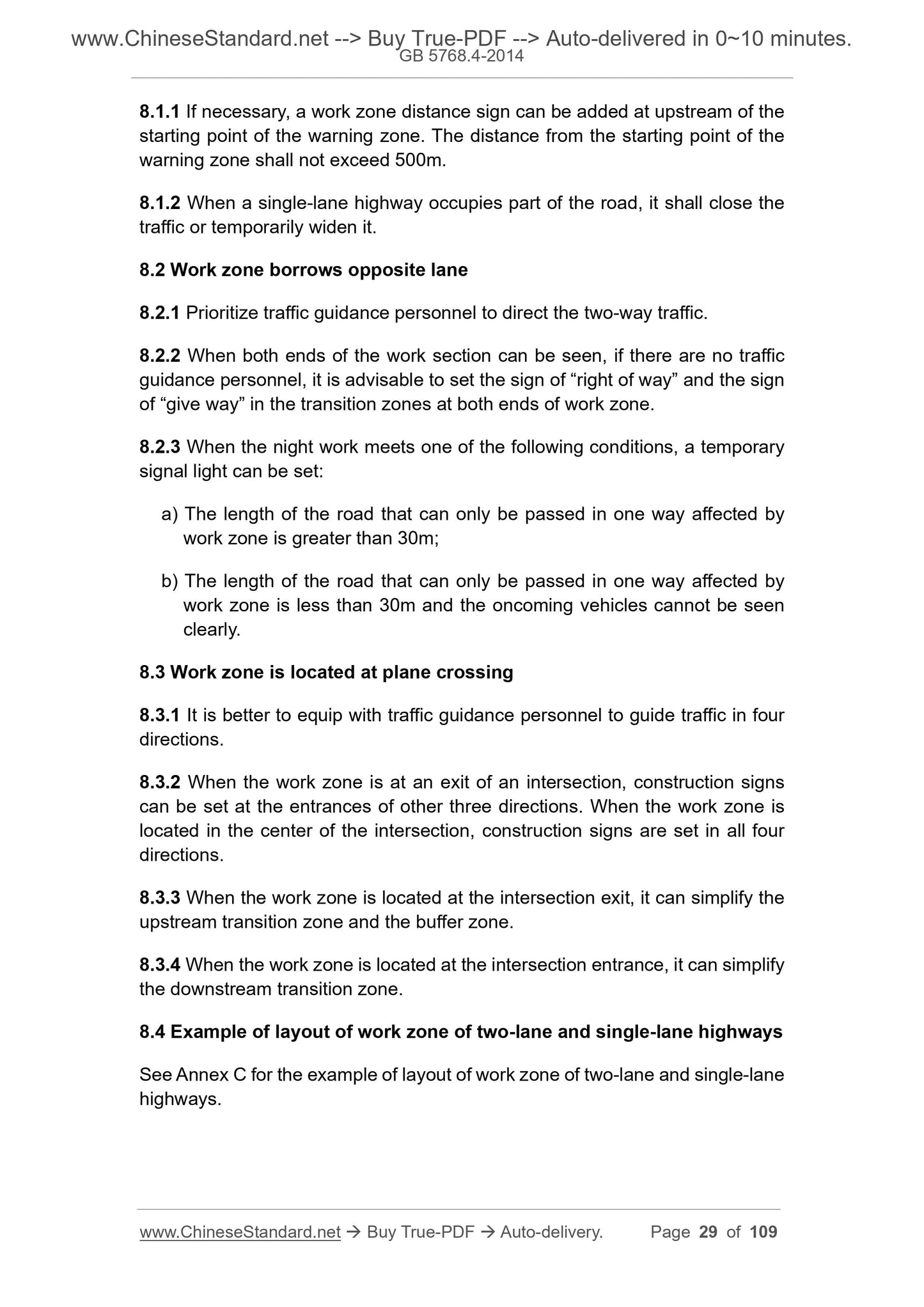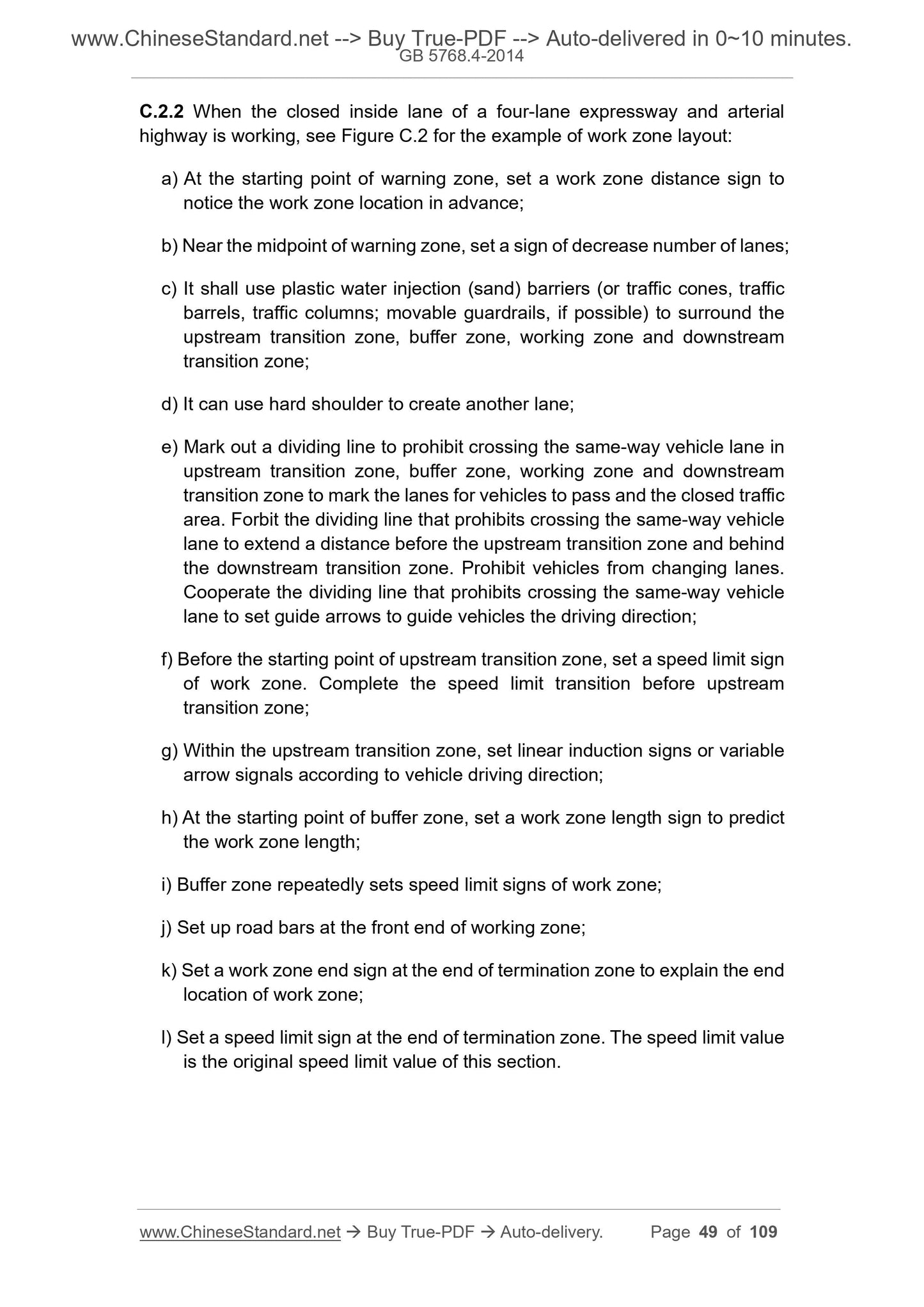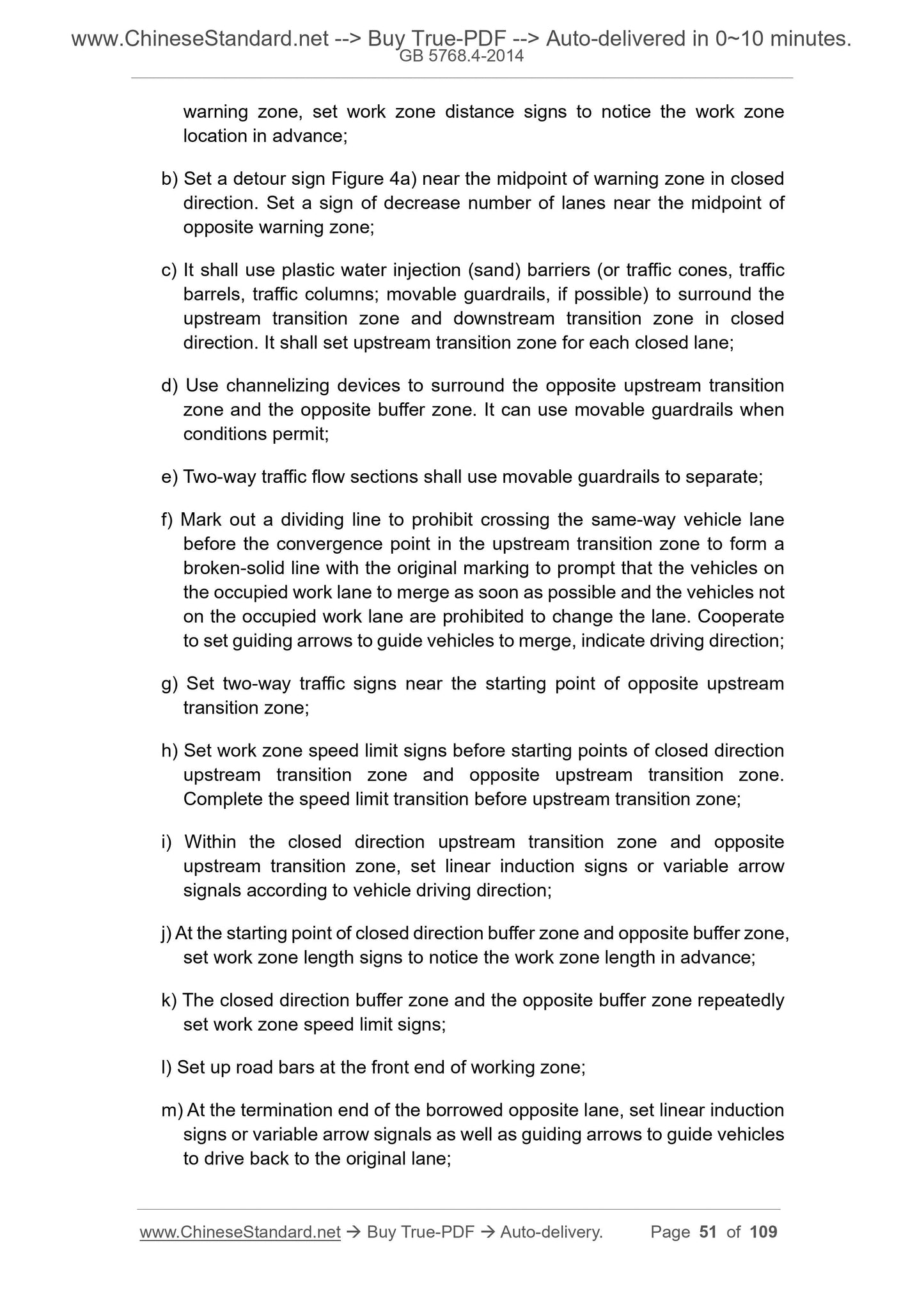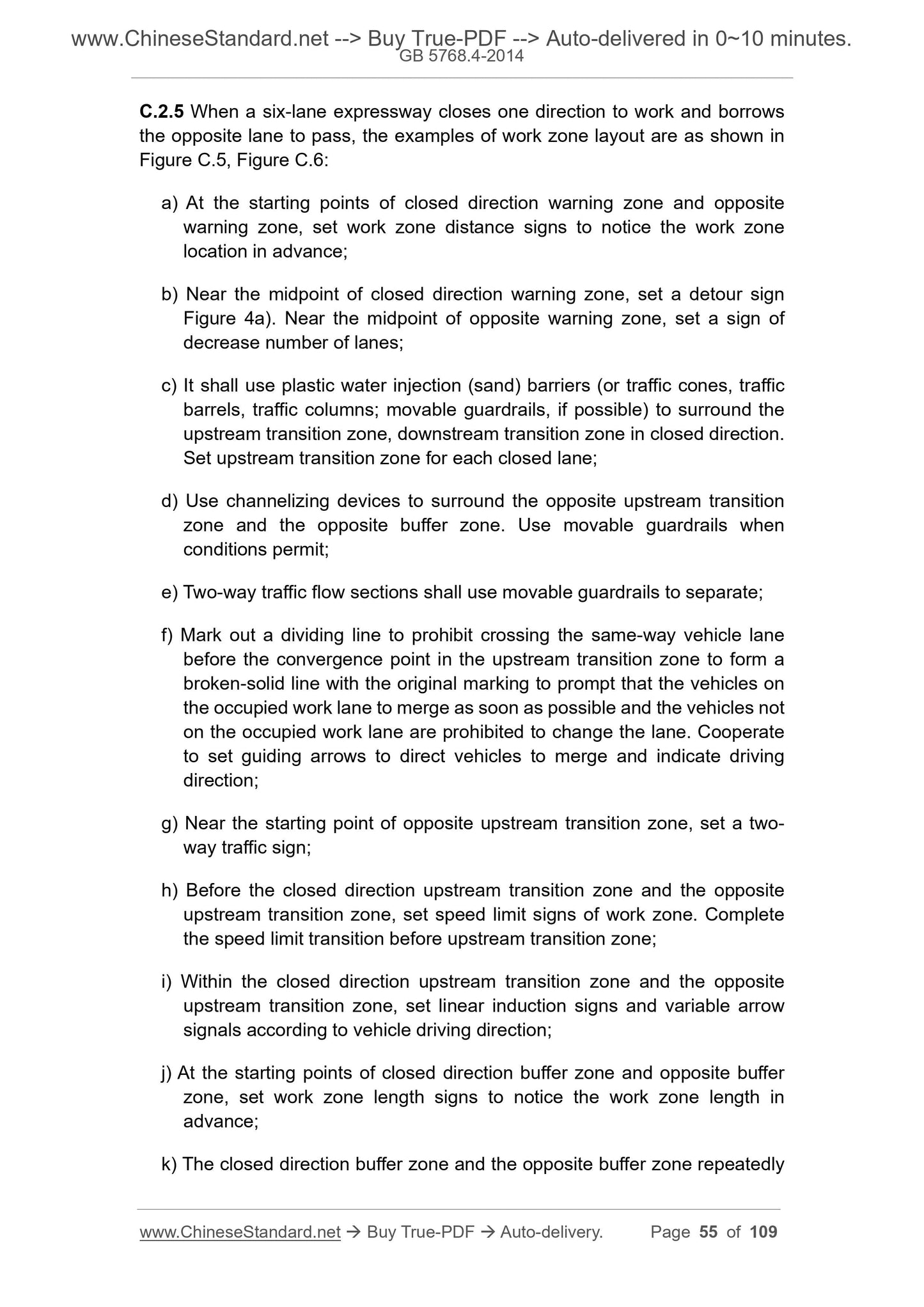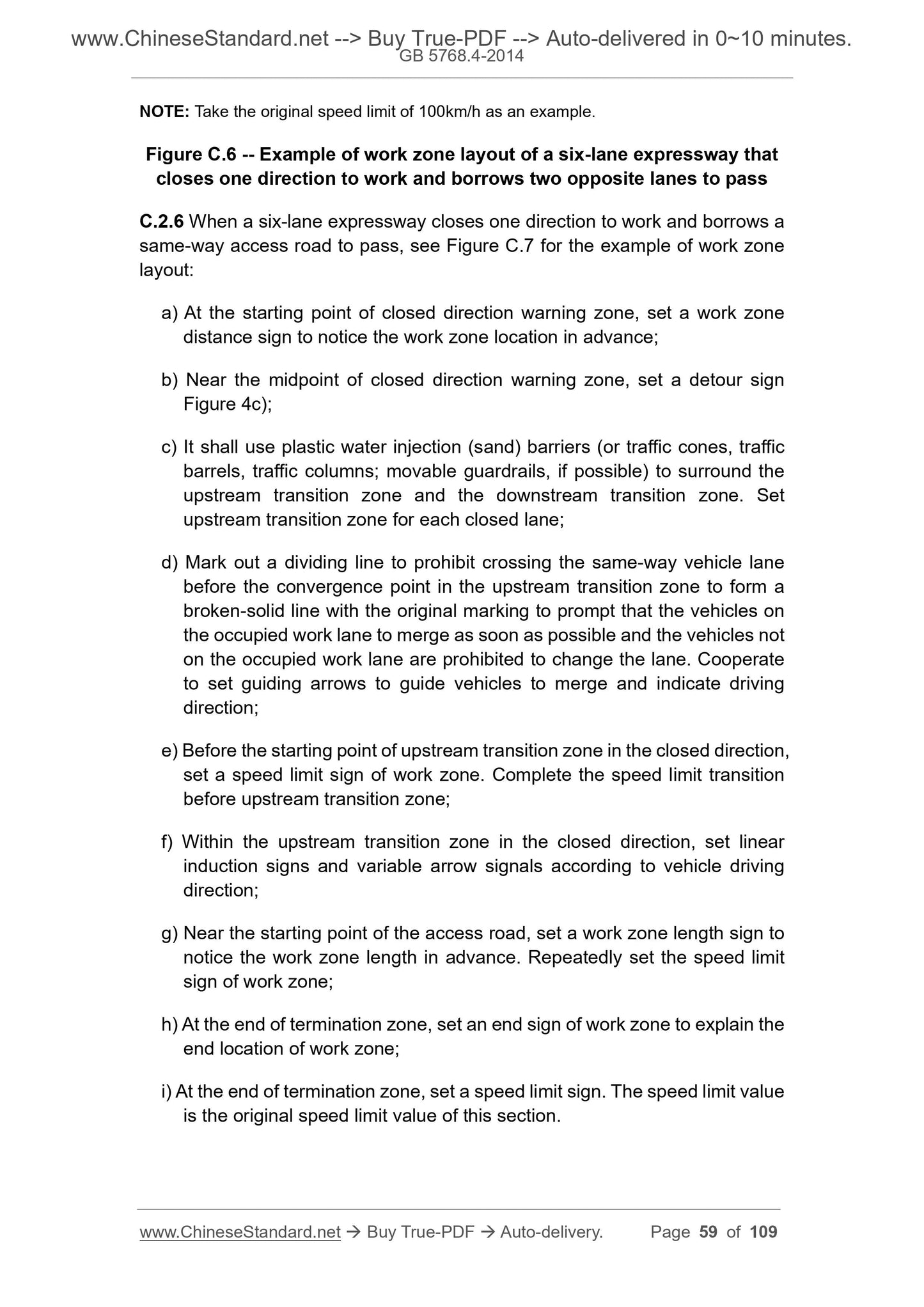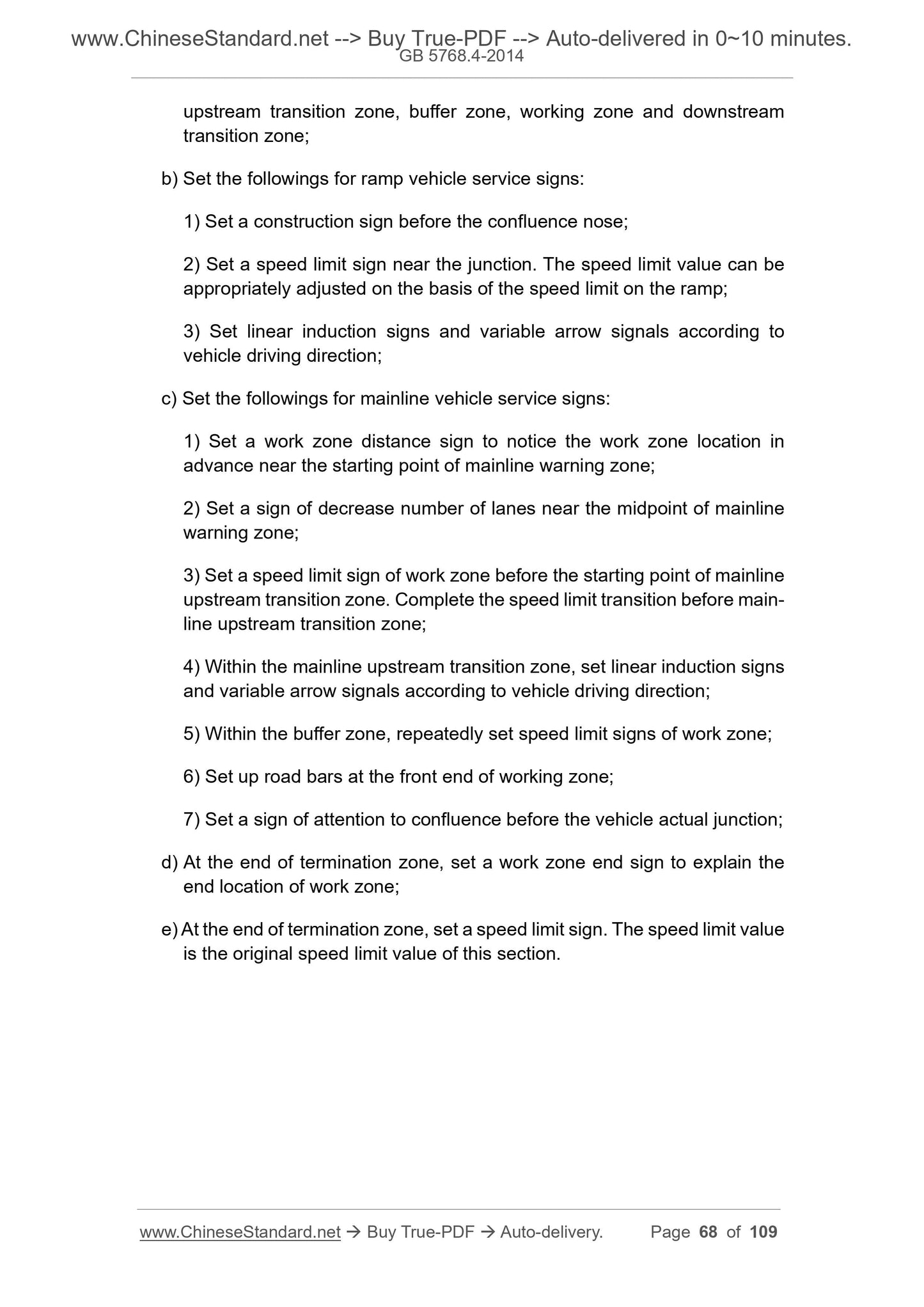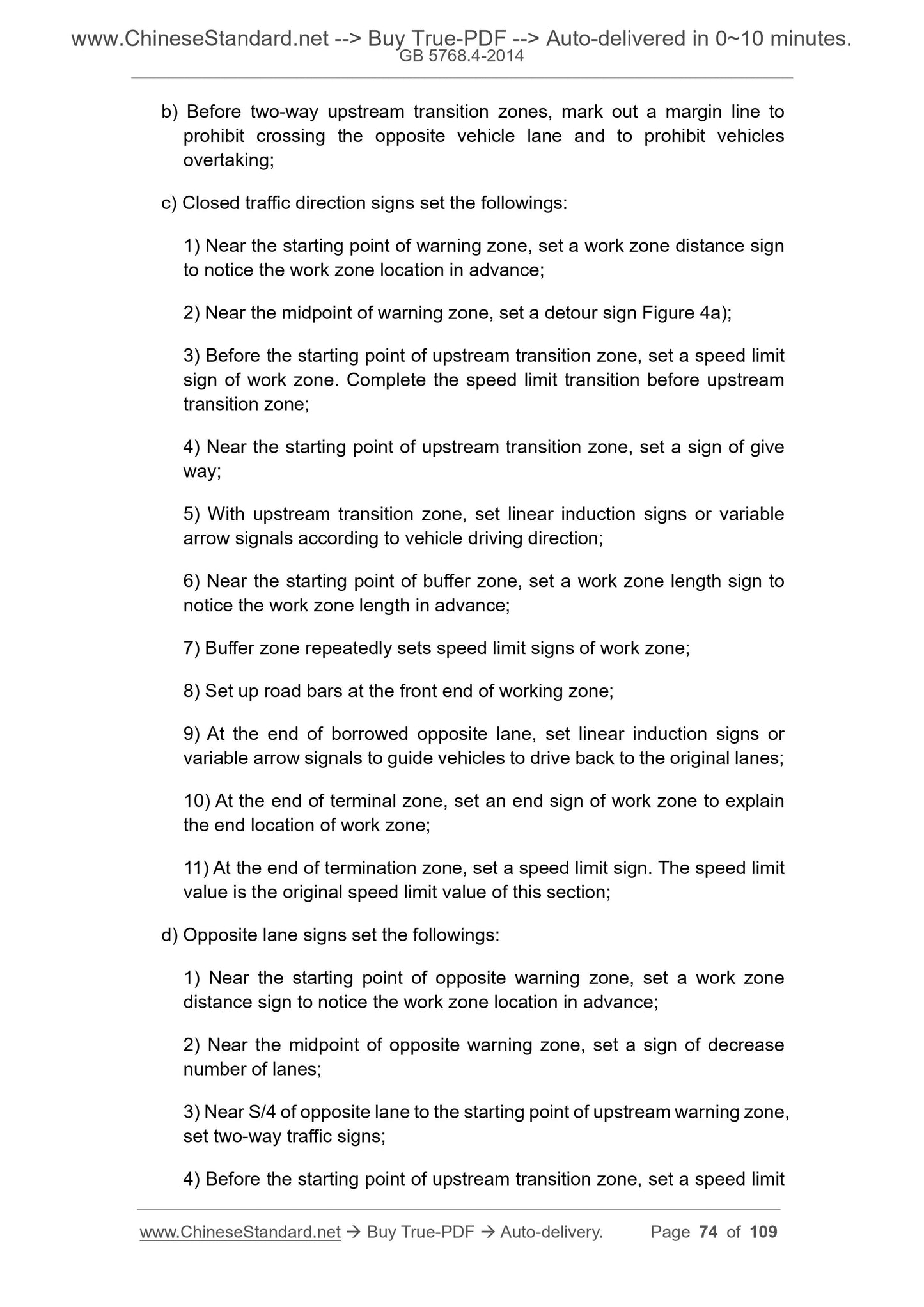1
/
of
10
www.ChineseStandard.us -- Field Test Asia Pte. Ltd.
GB 5768.4-2017 English PDF
GB 5768.4-2017 English PDF
Regular price
$630.00
Regular price
Sale price
$630.00
Unit price
/
per
Shipping calculated at checkout.
Couldn't load pickup availability
GB 5768.4-2017: Road traffic signs and markings - Part 4: Work zone
Delivery: 9 seconds. Download (and Email) true-PDF + Invoice.Get Quotation: Click GB 5768.4-2017 (Self-service in 1-minute)
Newer / historical versions: GB 5768.4-2017
Preview True-PDF
Scope
This Part of GB 5768 specifies the requirements for setting of road work zone’straffic signs and markings.
This Part is applicable to the setting of traffic signs and markings for works such
as construction and maintenance of roads, urban roads, and places, squares,
public parking lots and other places that are under the jurisdiction of the
organization but allow social vehicles. The settings of traffic signs and markings
for works such as construction and maintenance of other places where motor
vehicles pass can refer to this Part.
Basic Data
| Standard ID | GB 5768.4-2017 (GB5768.4-2017) |
| Description (Translated English) | Road traffic signs and markings - Part 4: Work zone |
| Sector / Industry | National Standard |
| Classification of Chinese Standard | R80 |
| Classification of International Standard | 03.220.20 |
| Word Count Estimation | 82,823 |
| Date of Issue | 2017-07-31 |
| Date of Implementation | 2018-02-01 |
| Issuing agency(ies) | General Administration of Quality Supervision, Inspection and Quarantine of the People's Republic of China, Standardization Administration of the People's Republic of China |
Share
